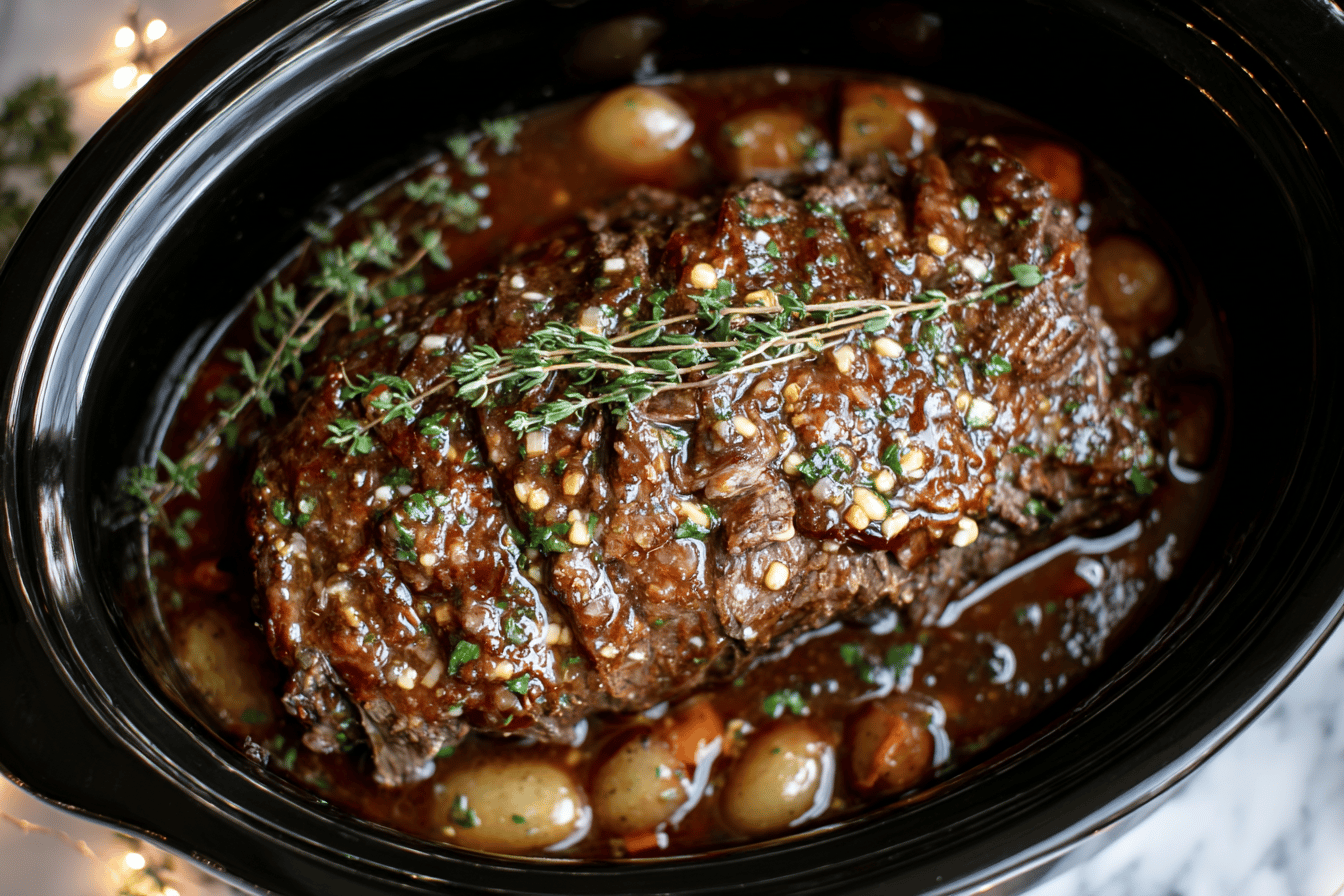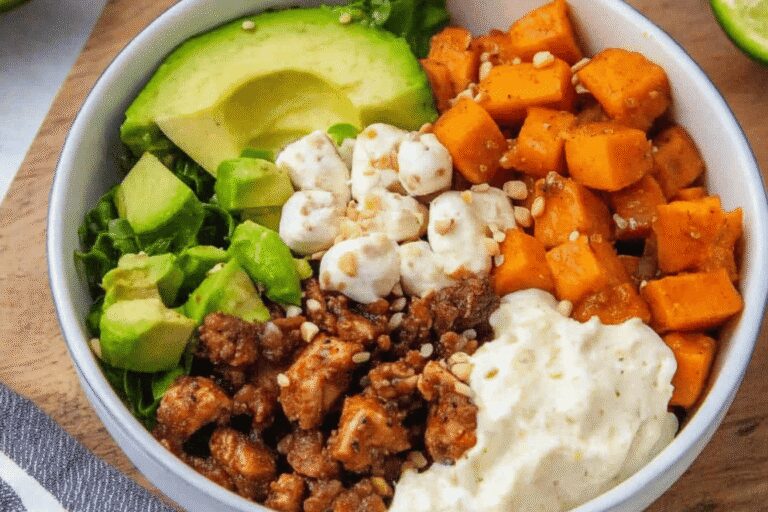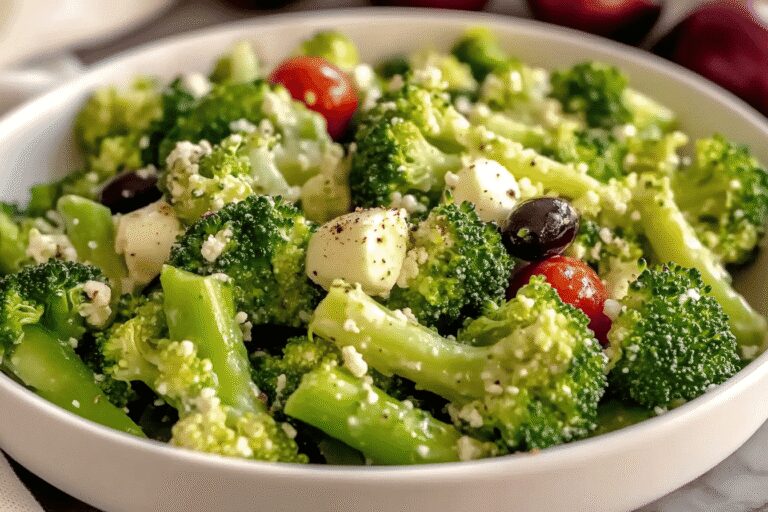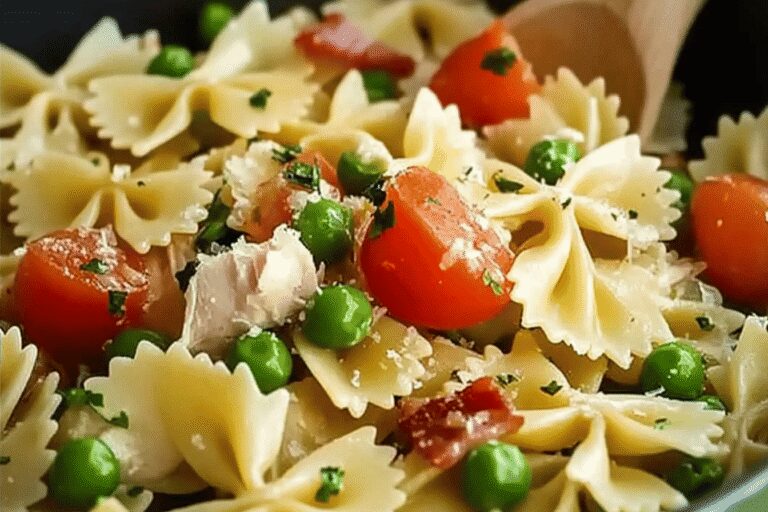Slow Cooker Beef Stew
Introduction
Winter Crockpot meals are a comforting way to warm up after a long day in the cold. Simple to prepare, packed with flavor, and ideal for gathering loved ones around the table, these slow-cooked dishes bring satisfaction like no other. They’re also wonderfully versatile, offering recipes that fit every taste and dietary need. Whether you’re an experienced cook or just getting started in the kitchen, putting together a hearty winter meal in your crockpot is a foolproof option.
Detailed Ingredients with Measures
For a delightful winter crockpot beef stew, gather the following ingredients:
– cubed beef chuck (two pounds)
– potatoes, peeled and diced (two medium-sized)
– peeled carrots, sliced into chunks (three large)
– diced yellow onion (one medium-sized)
– minced garlic cloves (two cloves)
– tomato paste (two tablespoons)
– beef broth (four cups)
– soy sauce (two tablespoons)
– all-purpose flour (three tablespoons, for thickening)
– dried thyme (one teaspoon)
– salt and black pepper to taste
Choose fresh and high-quality produce and meat to ensure your meal has a rich and satisfying texture.
Prep Time
To prepare this hearty dish, it will take around 15 minutes to chop and measure all the necessary ingredients. This includes cutting vegetables, cubing the meat, and gathering all the spices. Having everything organized and prepped ahead of time makes the cooking process so much smoother and more enjoyable.
Cook Time, Total Time, Yield
The cook time of this winter crockpot meal is approximately 8 hours on a low setting or 4 hours on high. The slow cooking allows the flavors to develop and the meat to tenderize perfectly. The total time needed, including preparation, is about 8 hours and 15 minutes. This recipe yields four hearty servings, making it ideal for families or for saving leftovers to enjoy later.
Detailed Directions and Instructions
Step 1: Prepare Your Ingredients
Peel, chop, and dice all required vegetables, herbs, or meats to the appropriate sizes as specified in the recipe. Gather all necessary dry seasonings, broths, or canned items. Ensure you have your crockpot clean and ready to use.
Step 2: Sauté or Pre-Cook (If Required)
If the recipe suggests browning meat or sautéing onions beforehand, heat a skillet on medium heat, add oil, and cook until slightly golden or fragrant. This step enhances the flavor profile of your dish before transferring ingredients into the crockpot.
Step 3: Layer Ingredients Into Your Crockpot
Begin by placing heavier ingredients, such as proteins or root vegetables, at the bottom. Top with softer vegetables, seasonings, dry rice or pasta (if used), and liquids like broth or water. Ensure nothing spills over the edge of your crockpot as it may impact the final results.
Step 4: Set the Cooking Time
Switch the crockpot to the desired time setting. Use a low setting for longer cook times (6-8 hours) or a high setting for quicker meals (3-4 hours). Cover with the lid securely to trap the heat and moisture.
Step 5: Stir Occasionally (Optional)
Depending on the recipe, it may be suggested to stir once or twice during cooking (e.g., to redistribute sauces or prevent burning). However, avoid lifting the lid too often, as this affects the cooking process by releasing heat.
Step 6: Check for Doneness
Once the cooking time is complete, check for doneness by testing meat with a fork for tenderness or vegetables for softness. For recipes that include dairy or greens, these may need to be added in the final 30 minutes for optimal freshness or incorporation.
Step 7: Final Adjustments and Serve
Season with additional salt, herbs, or spices as necessary. If the dish requires thickening, add cornstarch mixed with water, stirring occasionally until desired consistency is achieved. Serve immediately alongside any suggested sides or toppings.
Notes
Note 1: Prepare Ingredients in Advance
For smoother cooking, consider prepping your ingredients the night before, especially for early morning crockpot recipes. Store them in airtight containers in the fridge for convenience.
Note 2: Avoid Overfilling
Never fill the crockpot over two-thirds full. Overfilling can prevent even cooking, spilling, or overcrowding ingredients.
Note 3: Use Fresh Ingredients
For the best flavor, use fresh vegetables, quality meats, and herbs whenever possible. Although frozen ingredients work, fresh items often produce better results.
Note 4: Adjust Seasonings to Taste
Taste your meal at the end and make necessary adjustments. Some recipes may require more salt, pepper, or spices depending on individual taste preferences.
Note 5: Clean the Crockpot Immediately
To avoid stuck-on food residue, empty and wash your crockpot promptly after serving. For easier cleaning, soak the insert in warm soapy water before scrubbing.
Note 6: Cook Time May Vary
Crockpot cooking durations can vary based on the appliance’s brand and model. Monitor your first few recipes closely to gain familiarity with your crockpot’s timing.
Note 7: Use the Right Setting
Follow the recipe’s suggestion for low or high settings, as switching settings halfway through cooking can affect the final dish.
Note 8: Store Leftovers Properly
Transfer leftovers to airtight containers and refrigerate promptly. Most crockpot meals can be stored for up to 3-4 days or frozen for extended use. Reheat thoroughly before serving.
Cook Techniques
Sauté Ingredients Before Adding to the Crockpot
For a more profound and developed flavor, sautéing ingredients like onions, garlic, and spices before adding them to the crockpot is an excellent technique. This can help to caramelize the ingredients and create a richer taste.
Layer Ingredients for Even Cooking
Layering different ingredients in the correct order can help ensure even cooking. Place denser, slower-cooking ingredients like potatoes and root vegetables at the bottom, closer to the heat source, and lighter ingredients on top.
Use the Low Setting for Better Flavor Development
Using the low setting on a crockpot helps to build deeper, more developed flavors. While it may take longer to cook, this slow and low approach allows ingredients to meld together beautifully.
Don’t Overfill the Crockpot
Avoid overloading the crockpot beyond two-thirds full. Overcrowding can result in uneven cooking, so keep portions manageable and allow room for even heat circulation.
Add Dairy Products Toward the End
Cheese, cream, and other dairy products can break down and curdle if cooked for too long. To avoid this, add them during the last 15-30 minutes of cooking.
Resist Opening the Lid Frequently
Each time the lid is opened, heat escapes and can add 15-30 minutes to your cooking time. Resist the urge to check too often and trust the process.
FAQ
Can I Cook Frozen Meat in a Crockpot?
It is not recommended to cook frozen meat directly in a crockpot due to safety concerns. Thaw the meat fully before cooking to ensure even heat distribution and proper cooking.
How Much Liquid Should I Add?
Typically, less liquid is required for crockpot recipes because the slow cooking process retains moisture. Follow the recipe guidelines, but remember that meats and vegetables will release their own liquids.
How Do I Stop My Meals From Becoming Too Watery?
To prevent overly watery meals, use only the required amount of liquid, and try leaving the lid off briefly at the end of cooking to evaporate excess moisture.
What’s the Best Way to Reheat Crockpot Meals?
Leftover crockpot meals can be reheated on the stovetop or microwave for convenience. For best results, use a lower heat to warm the food gradually without overcooking.
Can I Leave My Crockpot On Overnight?
Yes, crockpots are designed for long and unattended cooking periods. However, ensure your crockpot is placed on a heat-resistant surface and in good working condition for safety.
What’s the Difference Between the Low and High Settings?
The low and high settings determine the cooking time rather than temperature. Low settings cook food slower over an extended period, while high settings speed up the process but can change the texture of some ingredients.
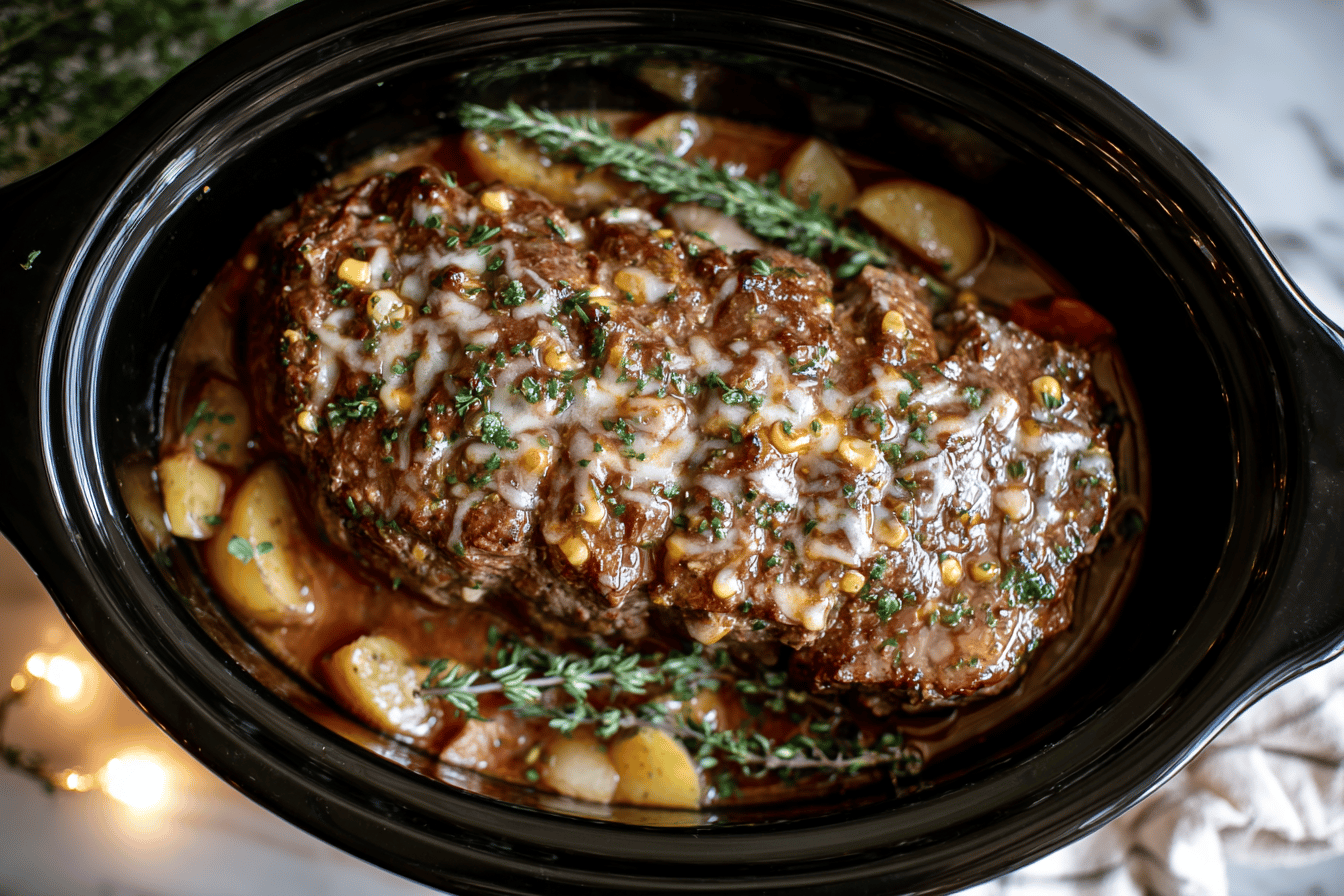
“`html
Conclusion
Delicious, hearty winter crockpot meals can provide comfort and nourishment during colder months, making them ideal for busy households. With the ease of slow cooking, it’s simple to prepare meals that are both flavorful and satisfying for the whole family. These recipes are versatile and can be customized to fit tastes and dietary preferences, ensuring everyone finishes their meal with a warm smile.
More recipes suggestions and combination
Chicken and Dumplings
A classic comfort food, this dish combines tender chicken, fluffy dumplings, and rich seasoning for a fulfilling meal your family will love.
Beef and Barley Stew
Enjoy the combination of hearty beef, wholesome barley, and nutrient-packed vegetables in this warming, one-pot dish perfect for winter evenings.
Vegetarian Chili
A delightful mix of beans, tomatoes, spices, and vegetables comes together in this filling dish, ideal for vegetarian and meat-loving households alike.
Slow Cooker Pot Roast
This tender and juicy pot roast paired with potatoes, carrots, and a savory gravy is perfect for Sunday family dinners or meal prep during the week.
Italian Sausage and Spinach Soup
A unique blend of spicy sausage, fresh spinach, and a robust broth makes this soup both wholesome and warming.
Sweet Potato and Lentil Curry
This flavorful curry combines sweet potatoes and lentils with warming spices, creating a tasty and nourishing winter dish.
Cheesy Broccoli and Rice Casserole
This creamy and cheesy casserole is comforting and packed with broccoli, rice, and plenty of cheesy goodness for a satisfying winter meal.
Stuffed Bell Peppers
Bright bell peppers filled with a mix of rice, vegetables, and delicious seasonings make this a colorful and healthy crockpot recipe.
“`

